Tools Required
| • | J 8614-01 Flange and Pulley Holding Tool |
| • | J 33782 Pinion Oil Seal Installer |
Removal Procedure
Important: Observe and mark the positions of all the driveline components relative to the propeller shaft and the axles prior to disassembly. These components include the propeller shafts, drive axles, pinion flanges, output shafts, etc. Assemble all the components in the exact places in which you removed the parts. Follow any specifications, torque values, and measurements made prior to disassembly.
- Raise the vehicle. Refer to Lifting and Jacking the Vehicle in General Information.
- Remove the tire and wheel assemblies. Refer to Tire and Wheel Removal and Installation in Tires and Wheels.
- Remove the brake drums.
- Remove the propeller shaft. Refer to Rear Propeller Shaft Replacement in Propeller Shaft.
- Measure the amount of torque required to rotate the pinion. Use an inch-pound torque wrench. This will give the combined preload for the following components:
- Record the measurement.
- Draw an alignment mark between the pinion stem and the pinion flange/yoke.
- Install the J 8614-01 as shown.
- Remove the pinion nut while holding the J 8614-01 .
- Remove the washer.
- Install the J 8614-2 (2) and the J 8614-3 (3) into the J 8614-01 (1) as shown.
- Remove the pinion yoke by turning the J 8614-3 (3) clockwise while holding the J 8614-01 (1).
- Remove the pinion oil seal using a suitable seal removal tool.
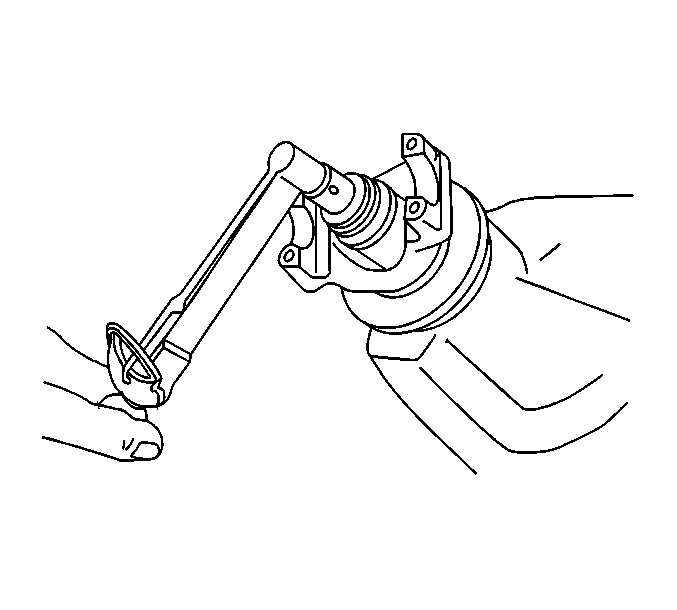
| • | The pinion bearings |
| • | The pinion seal |
| • | The carrier bearings |
| • | The axle bearings |
| • | The axle seals |
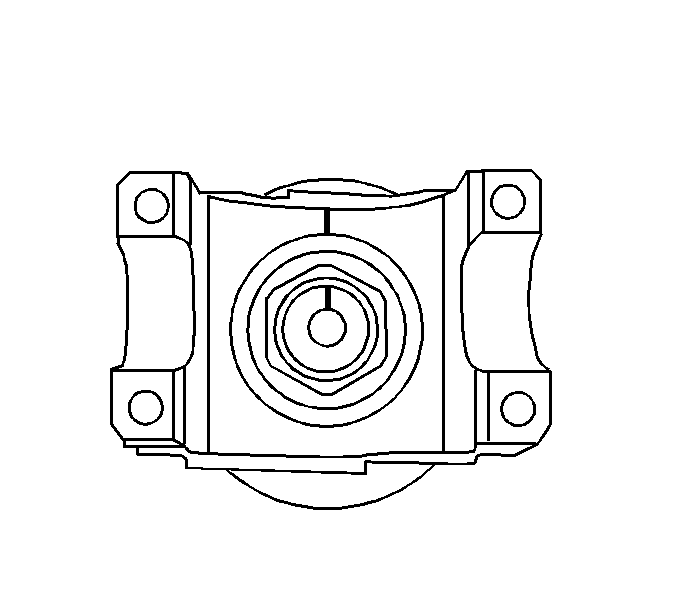
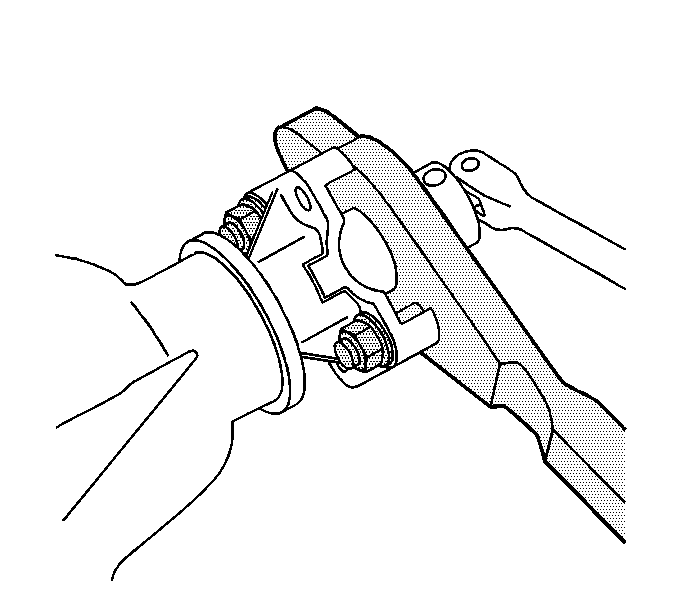
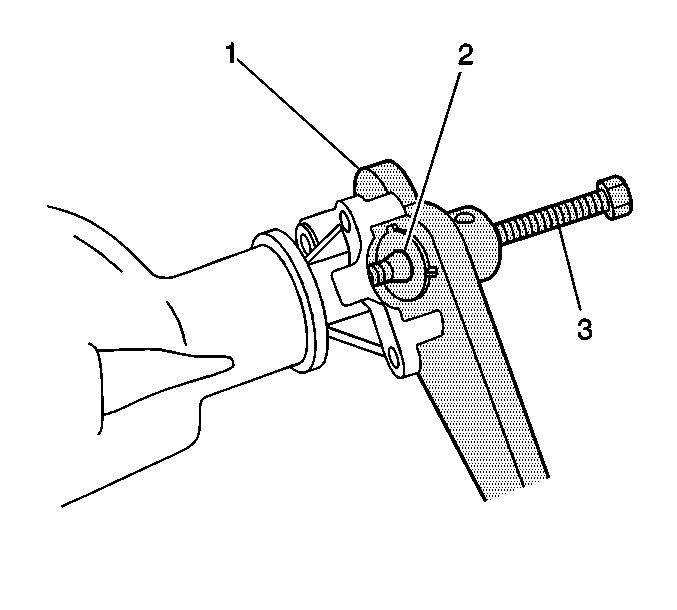
Use a container in order to retrieve the lubricant.
Important: Do not damage the axle housing sealing surface.
Installation Procedure
- Install the new pinion oil seal using the J 33782 .
- Apply sealant, GM P/N 12346004 or equivalent, to the splines of the pinion flange/yoke.
- Install the pinion flange/yoke.
- Seat the pinion flange/yoke onto the pinion shaft by tapping it with a soft-faced hammer until a few pinion shaft threads show through the yoke.
- Install the washer and a new pinion nut.
- Install the J 8614-01 onto the pinion flange/yoke as shown.
- Tighten the pinion nut while holding the J 8614-01 .
- Measure the rotating torque of the pinion. Compare this measurement with the rotating torque recorded during removal.
- Once the specified torque is obtained, rotate the pinion several times to ensure the bearings have seated. Check the rotating torque and adjust if necessary.
- Install the propeller shaft. Refer to Rear Propeller Shaft Replacement in Propeller Shaft.
- Install the brake drums.
- Install the tire and wheel assemblies. Refer to Tire and Wheel Removal and Installation in Tires and Wheels.
- Inspect and add axle lubricant to the axle housing, if necessary. Refer to Lubricant Level Check .
- Lower the vehicle.
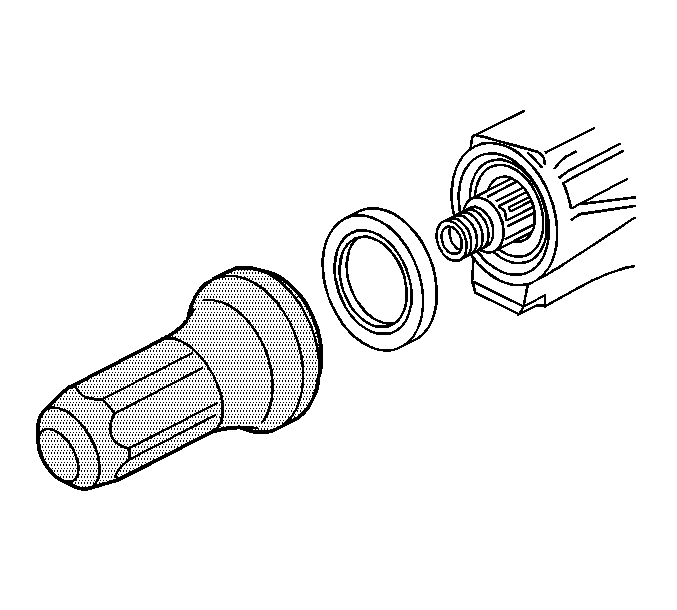
Important: Install the pinion gear flange/yoke to the pinion gear shaft in the same position as marked during removal in order to maintain correct driveline balance.
Align the marks made during removal.
Notice: Do not hammer the pinion flange/yoke onto the pinion shaft. Pinion components may be damaged if the pinion flange/yoke is hammered onto the pinion shaft.

Notice: Use the correct fastener in the correct location. Replacement fasteners must be the correct part number for that application. Fasteners requiring replacement or fasteners requiring the use of thread locking compound or sealant are identified in the service procedure. Do not use paints, lubricants, or corrosion inhibitors on fasteners or fastener joint surfaces unless specified. These coatings affect fastener torque and joint clamping force and may damage the fastener. Use the correct tightening sequence and specifications when installing fasteners in order to avoid damage to parts and systems.
Important: If the rotating torque is exceeded, the pinion will have to be removed and a new collapsible spacer installed.
Tighten
Tighten the nut until the pinion end play is removed. Rotate the pinion
while tightening the nut to seat the bearings.

Tighten
Tighten the nut in small increments, as needed, until the rotating torque
is 0.40-0.57 N·m (3-5 lb in) greater
than the rotating torque recorded during removal.
